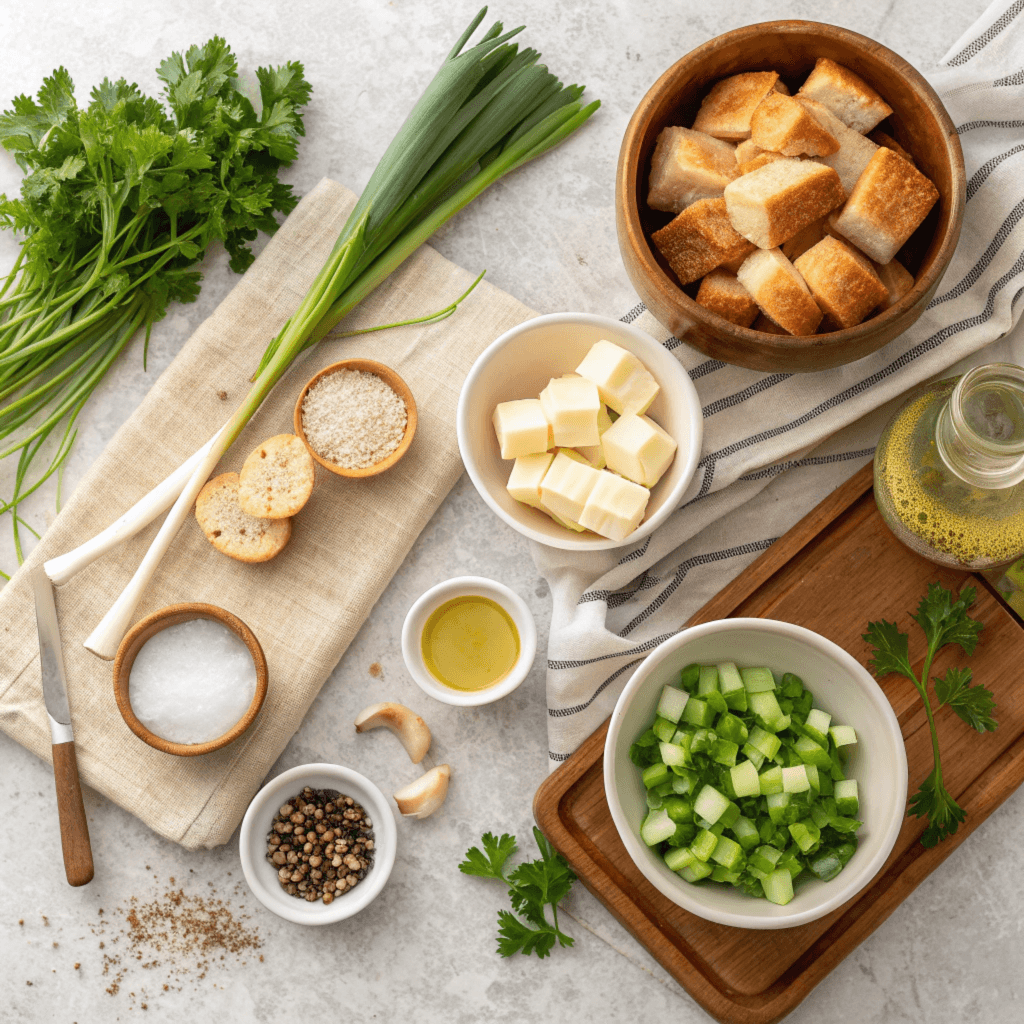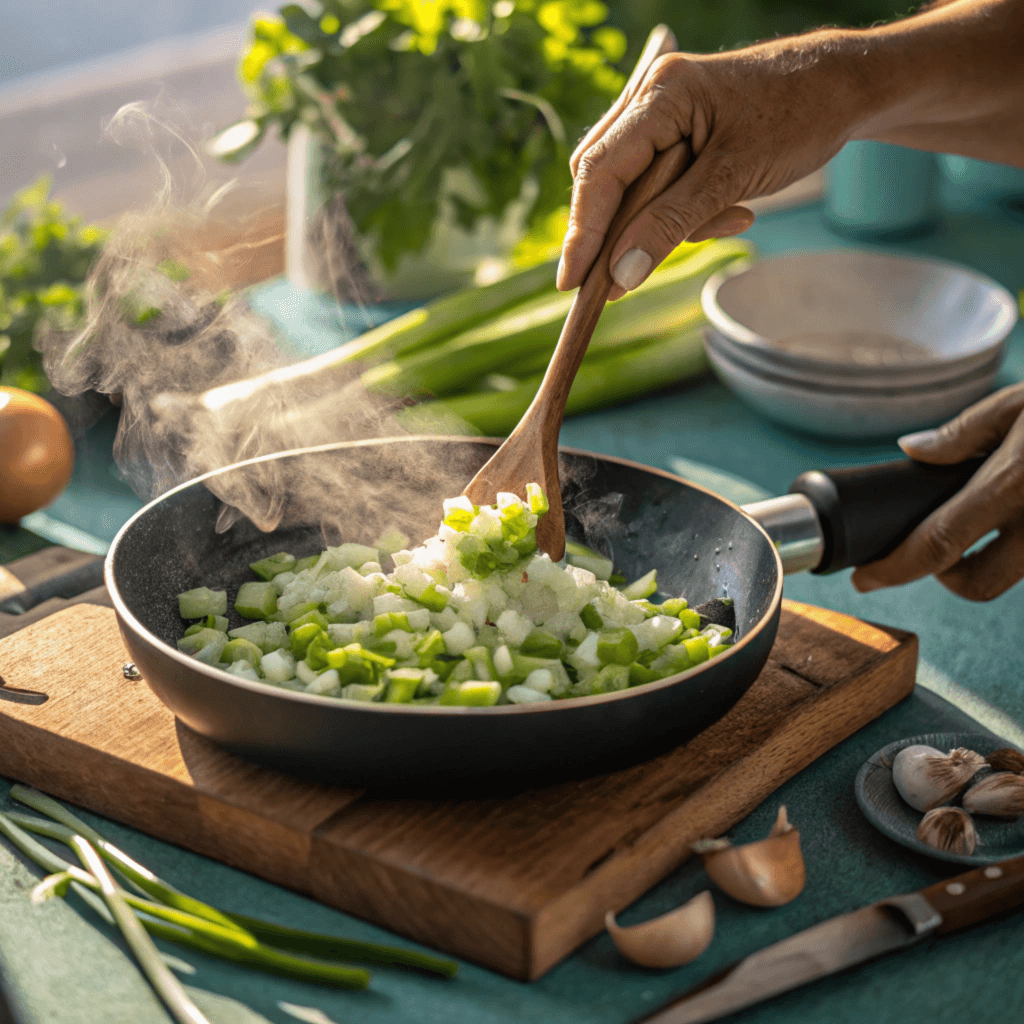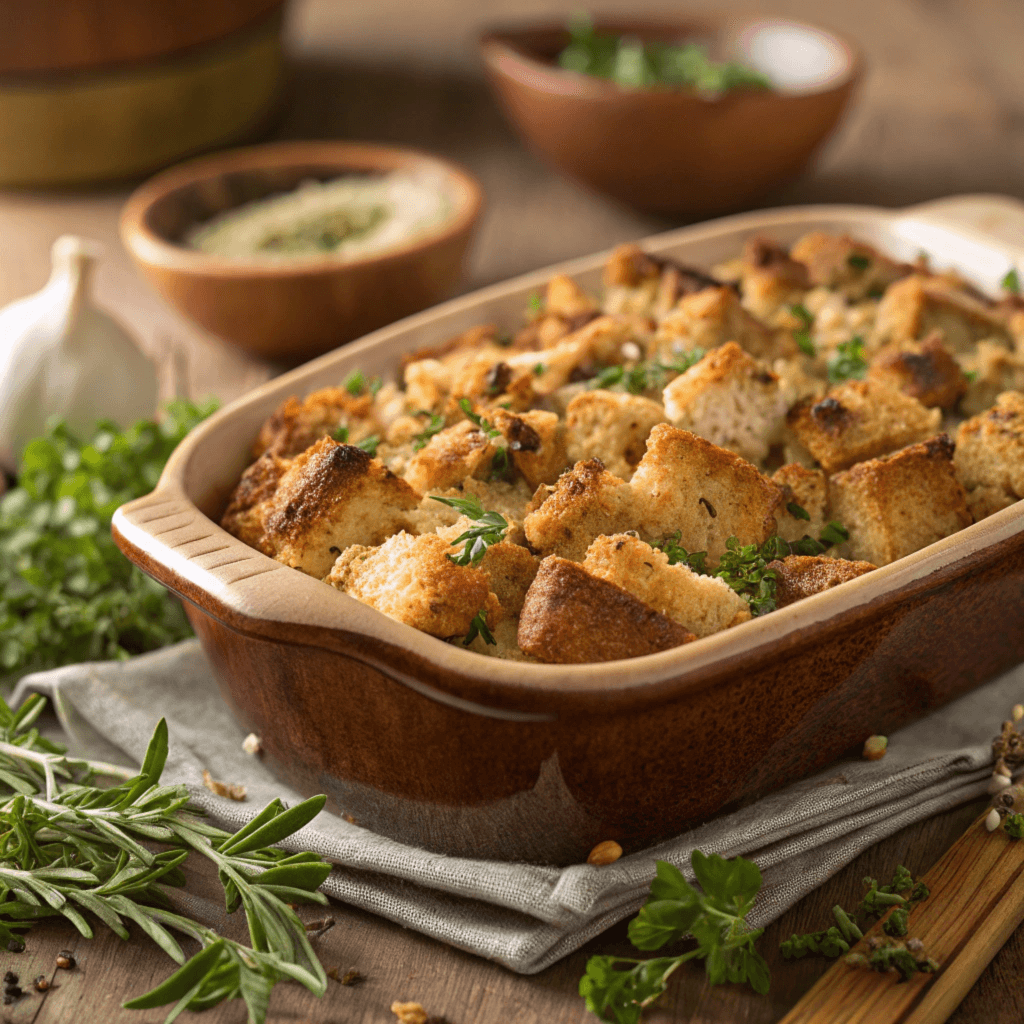There are few dishes that have the attraction and the long-standing tradition that is classic dressing made of. As a popular centerpiece for festive tables and an adaptable accompaniment to various dishes, classic dressing is much more than an appetizer. It represents an ancient culinary tradition cherished over generations. This delicious and flavorful food, often mistaken for a stuffing recipe, combines basic ingredients to produce an intricate and delicious taste. When you know the fundamentals of dressings that are traditional and its making and take a look at its many delicious varieties.
The comprehensive guide won’t just explain what the traditional dressing consists out of, but will also give you precise instructions to create your own recipe at the kitchen table. In addition, you’ll discover useful tips for cooking, cooking methods, and intriguing variations that make dressings go from tasty to extraordinary.
Table of Contents
How to Make Traditional Dressing Step-by-Step
In examining what typical dressings consist of, it becomes obvious that the true essence of the dish lies in its preparation. Although the ingredients are easy to find, the fun comes from how they are put together. We’ll take a look at every aspect so that you are able to make this recipe again without a doubt.
Ingredients for Traditional Dressing
The first step of making the perfect traditional dressing is gathering top-quality ingredients. Below is a complete checklist of everything you’ll have to prepare this delicious recipe:
- Bread: 8 cups of fresh white bread or cornbread that is chopped into cubes and dried. It forms the fundamental basis, providing an ideal structure and the best texture.
- Butter 1 cup unflavored butter that has been melted that gives it a rich, flavorful savoury taste.
- onion: one large onion cut finely to give it a little sweetness and the depth.
- Celery One cup chopped celery, diced for a slight crunch and the earthy freshness.
- chicken or Turkey Broth: 2 cups of water, heated, to add moisture to the bread and blend the flavors in a seamless way.
- Eggs two large eggs that have been lightly beat, and serve as binder to the ingredients.
- Herbs Blend of 2 teaspoons in dried sage and Thyme, as well as 1 teaspoon of rosemary for a savoury and earthy flavor.
- Salt and Pepper: 1 teaspoon of salt and 1/2 teaspoon of black pepper or as desired, to ensure an even seasoning.

In addition, you may add additional ingredients like apples, sausages, or pecans, to make the traditional dressing. Although they aren’t obligatory, can add new flavours and texture.
Preparation Steps for Traditional Dressing
Even though the ingredients are the foundation of the traditional dressing, the cooking process makes the dish come alive. If you follow these guidelines carefully it is possible to create an ideal dressing made of that is smooth, tasty, and satisfying.
Step 1: Drying the Bread
In the beginning, you should prepare your bread and dry it completely. A bread that isn’t dry can result in a watery dressing. Heat your oven up to 250°F and put the bread cubes on the baking sheet. The bread cubes will toast in your oven for about 10 minutes. Check them frequently so that they don’t over brown. After the bread has become crisp and dry, place it aside for cooling.
Step 2: Sauteing the Aromatics
In the meantime you heat up a large pot at medium temperature and begin to melt butter. Incorporate the diced onions and celery in the pan and cook for about 5-7 minutes, turning the pan frequently. In the meantime, cook the veggies until soft and translucent and release the sweet and delicious flavor. Then, add dried herbs and cook another minute and let the flavors blend beautifully.
Step 3: Mixing the Ingredients
After that, mix the bread cubes toasted and the sauteed vegetables into an enormous mixing bowl. Slowly pour hot turkey or chicken broth over the mix and stir gently to ensure a uniform distribution. Make sure not to overload the bread. Then, mix in the eggs and combine well. Eggs not only hold the ingredients, but they also add to the overall flavor of the meal.

To ensure that whether the consistency is right to confirm the consistency, squeeze a small amount of the mixture gently. The mixture should be able to hold its shape and not be squishy. Change the amount of broth as needed to attain this equilibrium.
Cooking Instructions for Traditional Dressing
The dressing made of is now all set to cook. Baking is the most popular method and the result is the most delicious mixture of crisp edges and an incredibly soft inside. The steps to follow:
Step 1: Preparing the Baking Dish
The first step is to heat your oven to 375°F. When the oven is heating and you are ready to grease your 9×13-inch baking dish using butter or a non-stick spray. This will ensure that the dressing made of does not stick to the baking dish and makes it easy to serve.
Step 2: Arranging the Mixture
Place the dressing mix you have prepared into a baking dish coated with grease. It will spread evenly. Press down to release air pockets. Smooth out the surface for an even layer.
Step 3: Baking the Dressing
Place the dish in aluminum foil and set it inside the oven. Bake for 30 minutes and allow the flavors to blend. After baking for 30 minutes take the foil off and leave the dish to bake for another 15 to 20 minutes. The last step will create an exquisite golden brown crust that is the hallmark of traditional dressing.
Step 4: Checking for Doneness
When you take the dish out of the oven, verify cookedness by inserting a sharp knife or skewer inside the middle. The result should be clear, meaning the dressing made of has cooked to perfection. Furthermore, the edges need to remain crisp and not burnt.
Step 5: Resting the Dressing
Finally, let the dressing made of to cool between 5 and 10 minutes prior to serving. This resting time allows the flavors to settle and makes cutting and serving easier.
Enhancements and Personalization
Even though traditional attire is wonderful in its own right, adding personal touches could elevate it even more. Here are a few ideas to personalize your outfit:
- Protein Additions: Incorporating crumbled sausage diced chicken or oysters, can give more flavor and a richer taste. You can try, for instance, combining it with this amazing Chicken Dressing Recipe Recipe .
- Fruity Twists Mix chopped apples, dried cranberries or golden raisins to add an extra dose of sweetness.
- Nut Crunch: Incorporate chopped pecans and walnuts to add flavor and texture.
- Bread Types: Experimenting with sourdough or rye breads can result in fascinating flavour profiles.
The ability to customize your dressing will not only make it more unique but it also lets you adapt to different preferences in dietary and preferences. If you are looking for a dish to complement the dressing perfectly, check out the Boston Cream Cake Recipe.
Key Tips for Perfecting Traditional Dressing
The perfect dressing demands attention to every detail. Here are some tips from experts to consider:
- Dry the bread well: Bread that is too fresh could result in an unappetizing dressing. Drying it helps ensure that it absorbs the broth and does not break.
- Season slowly: To avoid over-salting Season slowly and test the taste of your broth as you go. Keep in mind that broth is often a source of salt, so make adjustments accordingly.
- Adjust the moisture: The dressing made of must be moist but not too damp. Make adjustments to the broth according to the texture of bread.
- Bake Covered at First: Covering the dish in the beginning of baking helps retain the moisture. The removal of the cover at the end allows the cake to bake until crisp.
- Rest Prior to serving: Allowing the food to rest for a while after baking improves the taste and facilitates serving.
Final Touches and Plating

- Creating a Golden Crust:
- To ensure a crispy and crisp cake top, apply lightly with butter, melted before the 10th minute of baking. This will not only increase appearance but gives the cake a delicious richness.
- Adding Garnishes:
- Sprinkle freshly chopped parsley thyme, or sage on the salad dressing, to add some colour and the aroma.
- Plating Like a Pro:
- Serve traditional salad dressing made of with a ceramic bowl to create a cozy atmosphere or in a contemporary, stylish casserole dish for a sleek style. The dishes are both attractive due to their flexibility and elegance.

Pro Tips & VariationsAdvanced Techniques to Elevate Your Dressing
Pro Tips & VariationsAdvanced Techniques to Elevate Your Dressing
When you’ve grasped the basic principles of the traditional dress and putting it on, there are many more advanced methods to consider. These suggestions will make sure that your outfit stands out at the table.
Incorporating Homemade Stock:
While store-bought broths are convenient but making your own turkey or chicken broth will give you an unbeatable quality of taste. Cook the bones of your poultry along with carrots, onions, celery and herbs for a couple of hours. Then strain and incorporate this broth into the dressing made of to add a personal flavor.
Layering Flavors:
Incorporate caramelized onions or roast garlic to add layers that are sweet and umami. The ingredients blend effortlessly along with the other elements.
Cooking Alternatives:
If you would prefer a less sour dressing, you can cook it in the slow cooker. It keeps the dressing made of moist and minimizes the possibility of baking too long. If you want a smoky taste cook the cake in a covered cast iron pan on the grill.
Creative Variations
It usually cooks with poultry, allowing the juices to absorb and create a savory taste. Alternatives such as rice and grains may also be used.
These are a few suggestions:
- Southern Cornbread Dressing:
- Replace white bread with crumbled cornbread and include diced ham or bacon.This popular recipe throughout America’s Southern United States pairs well with dishes like the Alice Springs Chicken recipe.
- Vegetarian Option:
- Alternate the chicken broth with vegetable broth and add diced mushrooms to give an earthy flavor. Be sure to enhance the flavor in order to counteract the loss of flavor from meat.
- Fruit-Infused Dressing:
- Incorporate dried cranberries the apricots, as well as golden raisins. The additions provide an apricot-like sweetness in contrast to the flavors of the dish and give a vibrant hue.
- Nutrient-Rich Enhancements:
- Include chopped spinach, kale and even quinoa to give an increase in nutrients. The ingredients are incorporated seamlessly with the other ingredients, and boost its health benefits.
- Global Influences:
- Include spices such as cumin, smoking paprika or curry powder to give your dressing International flavor. The addition of these spices will alter the taste of your dressing totally.

FAQs: Answering Your Questions About Traditional Dressing
What Is Stuffing Traditionally Made Of?
The traditional recipe for stuffing is cubes of bread, broth and aromas such as celery, onions, and herbs. It is usually cooked with poultry. The juices are allowed to absorb and create an savory taste. Alternatives such as rice and grains may also be employed.
What Is Dressing Made Of?
The dressing made of typically contains bread as the primary ingredient, as well as the broth, butter, vegetables, and seasonings. As opposed to stuffing, dressing is generally prepared in a separate pan instead of in the bird itself, which makes dressing a much more flexible option.
What’s the Difference Between Dressing and Stuffing?
While the two terms are often used interchangeably, stuffing typically cooks inside the meat cavity of a turkey or chicken, whereas dressing made of is cooked in a separate dish. Additionally, dressing tends to be crisper, while stuffing is moister due to the liquids released from the meat.
Why Do Old People Call Stuffing Dressing?
The phrase “dressing” is commonly used throughout the Southern United States, whereas “stuffing” is prevalent in Northern locations. The distinction in linguistics dates back to Victorian England in the Victorian era, which was a time when “stuffing” was deemed crude, and “dressing” was thought of as more refined.
Can Traditional Dressing Be Made Gluten-Free?
It is possible to substitute regular breads with gluten-free ones. Be sure that the bread has been dry or toasty prior to making use of it to get the ideal appearance.
How Do I Store Leftover Dressing?
Keep dressing made of left over in a sealed airtight container within the refrigerator for up three days. In the oven, heat it at 350 degrees F, covered in foil until it is warmed up.
Can I Prepare dressing made of Ahead of Time?
Absolutely. Make the dressing made of an entire day before and keep it in the fridge. Just before serving, bake the dressing for maximum freshness.
Conclusion
Traditional dressing made of is much more than simply a meal; it’s an ancient culinary practice that connects generations and leaves lasting memories. From the simple ingredients it uses to the endless possibilities the classic recipe has an array of options for all. No matter if you favor a classic recipe or an innovative variation, mastering the classic dressing is sure to increase your repertoire of culinary recipes. Therefore, get the ingredients you need, follow these instructions, and enjoy a dish which brings warmness and happiness to everyone at the dinner table.

1 thought on “What Is Traditional Dressing Made Of? Everything You Need to Know”